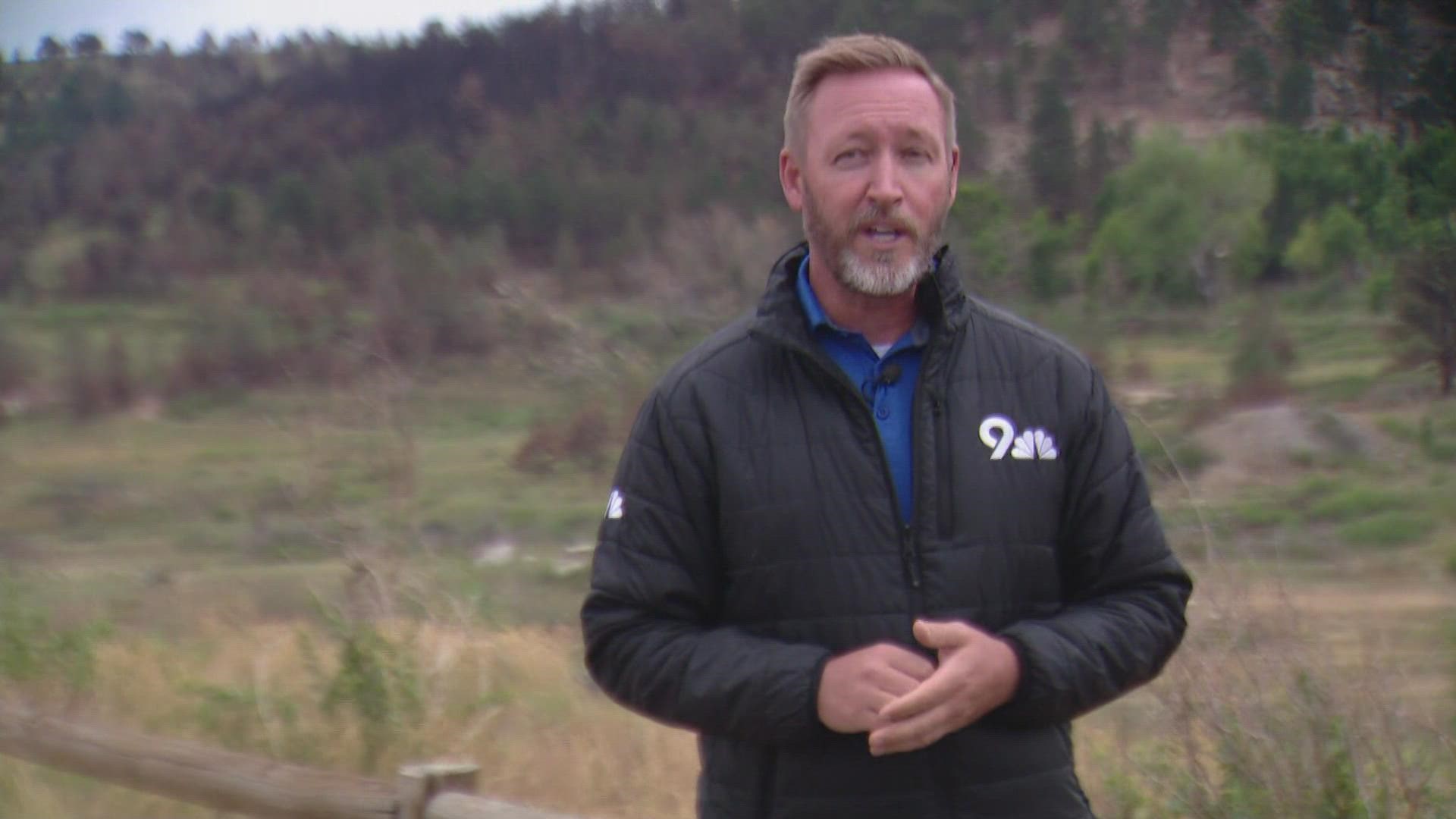BOULDER COUNTY, Colo. — The Marshall Fire happened in a unique place, well beyond the traditional wildland, so the burn scar flood threat is much lower.
It did get a major test from Mother Nature on Wednesday night however when close to three inches of rain fell in less than 90 minutes. Fortunately, all the trouble that was reported was some area roads washed out by mud and burn scar debris.
No closures were necessary.
Here are some of the factors that lead to high flood threat in burn scars.
Steepness of Terrain
The flooding in the Marshall burn area Wednesday would have been much worse if the slopes were steeper. That’s what makes the Cameron Peak, East Troublesome, Spring Creek, and Grizzly Creek burn scars so dangerous, because the water can move downhill faster.
Most of the slopes in the Marshall burn scar have shallow angles under 30 degrees.
Burn Severity
Burn severity is the measure of how badly burned the soil was. It mainly focuses on the temperature and duration of the fire in one spot, and the amount of vegetation mortality.
Basically, the hotter the burn, the higher the flash flood risk will be in the years to come.
The Marshall Fire did not burn the soil quite as hot, because most of the fuel consumed was grass, which burns quickly.
When a wildfire burns through a pine forest, it can leave the topsoil completely hardened and hydrophobic, which it tends to repel water.
Vegetation Recovery
The grasses are usually the first vegetation to return to the burned soil. That adds just enough stability to the topsoil if the slope is not steep. Badly burned areas with steep slopes needs tree and shrub roots to grow back, which can take several years to happen.
The Marshall Fire happened at the end of December 2021, and there was already a lush layer of grass growing across the entire burn scar a few months later.
Tree Canopy
It's not just the condition of the ground but the tree canopy is also a huge factor.
Normally the soil in the mountains lies underneath the thick tree canopy of a forest. That allows the most of the rain to get intercepted by the leaves, and pine branches, and slowly trickle or drip down to the ground.
That lessens the impact of heavy rain.
When the trees are dead and thin, more of that rain can impact the ground all at once, which increases the rate of runoff.
SUGGESTED VIDEOS: Severe Weather

